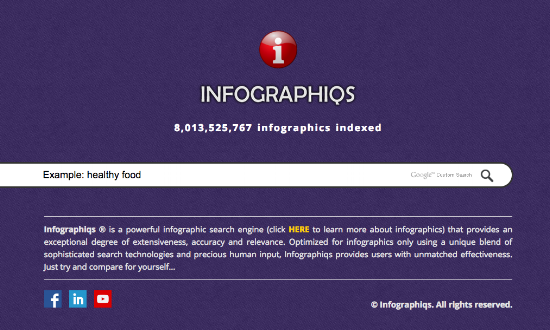Content is multiplying at an astonishing rate as more companies embrace a role as publisher.
Brand websites are turning into full-fledged information platforms that serve buyer needs from the solution research process through the first sale and for years beyond.
For all this growth and maturation, though, there’s a flipside.
Lots of verticals are still plagued by junk content. It’s still difficult for users to find exactly what they want in many areas, and that means there are huge opportunities throughout most industries. Even when content is robust, there’s always a chance to do things better.
Let’s take one obvious example: Job placement.
If the average person goes hunting for information on job hunting, employers, or industries in their area, what do they see? Often, the entire first page is crowded with job search engines.
This is useful information – for someone. But it’s not so valuable for those users at that time. And so, even in an area that attracts tons of interest and traffic, there’s still a lot to be done!
The key to it all: Content research.

A content research process helps you ensure you’re putting out informative content that’s useful, helpful, and compelling. There are two ways to look at it:
- Internal research processes tap your team’s knowledge and find your unique contribution.
- External research processes help you realize what’s out there and situate the contribution.
Just like you wouldn’t butt into a conversation without knowing what’s going on first, you shouldn’t jump into content marketing without checking out what’s been said on a topic. Then, you’ll see exactly how your perspective can enrich the dialogue.
Here’s how:
The Inside Track: 6 Steps for Internal Content Research
1. Understand Your Audience with Detailed Buyer Personas.
There is no such thing as generic content – all content is for someone.
Good web content is like a love letter to your audience: It has their name on it and it says exactly what they want to hear. In particular, you need to know the pain points your buyers face on a daily basis so you can craft trusted, credible content to help them overcome their challenges.
To get to that point:
- Build detailed buyer personas for each offering you have and each way it could be used.
- Implement data analytics on your sites to see which content outperforms expectations.
- Use progressive profiling on your site to capture details about your individual users.
- Issue post-sale surveys and follow-up calls to refine your personas with real insights.
Remember, your buyer personas are living documents. They’ll change and grow with your business, so revisit them at least once a quarter to fill out them out further and make adjustments.
2. Provide Real Value Throughout Your Site (the “Secret Sauce”).

If you want to stoke real interest among savvy B2B buyers, you need to go beyond features as you discuss what makes your solution sing. Thought leaders go a step past what they do differently and provide an argument for why their way is better.
This links into your content research process because you should always be on the lookout for concrete new ways to add value to every page of your site. Keep this in mind and even your About page can be worth reading (for someone other than your mom!)
Let’s consider some ways you can ensure every page bursts with genuine value:
- Talk about your pricing – yes, get real and don’t make prospects jump through hoops!
- Talk about the actual pros and cons of similar solutions, including your competition.
- Be authentic ... work on a one-to-one conversational tone fit for a human, not a robot!
No matter how informative and interesting you make each page, you can’t assume any prospect will read all of them ... or even a tenth of them. So, put your best self on display every time!
3. Figure Out How to Improve on Existing Information Sources.
The first thing you’re going to do in any content research process is run a generic Google search.
Hey, that’s exactly what your prospects are doing, too – according to Google, 71% of product research efforts start with that generic search. That means when you hit up Google, you get a chance to see exactly what your prospects are seeing. Isn’t that groovy?
When you comb through the top 10 results for your target keyword, you’ll notice things:
- Content that’s not that good, and floated to the top of a non-competitive keyword.
- Content that’s “pretty good,” but outdated by two years or more based on pub date.
- Content that’s solid, but relies entirely on text without any visual or video elements.
- Strong, incisive content that lacks a clear promotional strategy or backlink portfolio.
- Excellent content with social and visual features that meets user needs comprehensively.
Of all the content you run into in your initial check, only about 5% will be in that last category.
So, start reviewing the successful search results that don’t quite measure up and determine how you can improve on them. Add value with deeper info, cross-link to other resources, expand on visual aids, or combine text-driven content with multimedia training resources.
Once you’ve seen the ways you can improve on what’s already winning, the rest of your content research will be guided as you look for ways to deliver on the promise of even better resources.
4. Drum Up Perspectives from Inside Your Organization.

Many brands are turning toward a marketer-driven content model where one content marketing pro performs the research, does the writing, and even crafts the visual narrative.
While this is fine for small teams and it helps marketers uplevel faster, it often overlooks the immense knowledge that the rest of your enterprise has to offer your audience.
Marketers should have open channels of communication with the rest of the enterprise so they can bring in expertise from diverse areas like product development, operations, and management. A quick interview is a fun way to pick others’ brains.
When you decide to call on internal subject matter experts, remember to:
- Come up with a few questions in advance to get the conversation started.
- Guide the discussion, but let them take things in unexpected directions.
- Ask open-ended questions so you can document their thought process.
- Consider recording the conversation (with consent) for later reference.
Think of a conversation with your SMEs as something similar to a discovery session with hot leads. You don’t know what you don’t know, so it’s up to you to let them help you figure it out. Practice active listening and look for opportunities to pursue interesting avenues.
You never know what little digression might turn into a successful e-book or video series!
5. Reach Out to Your Sales Team.
Your sales team pounds the pavement every day talking directly to leads. They’re the ones who get to see the newest twists and turns in customer thinking in action – and their take can help you craft fresh questions for your marketing to address.
Of course, you can accelerate the process by reaching out to sales any time. And you should!
When you’re setting off on a new content research project, it’s a good idea to loop sales in and see if objections or misunderstandings around the subject have come up in recent customer discussions. That frames your content with real world applications in mind from the very start.
Keeping your sales team looped in is easier than it might look:
- Have a monthly or biweekly meeting where sales and marketing teams compare notes.
- When you need sales input, give them plenty of lead time – they’re often super busy!
- Informal contacts, like lunch meetings, can help keep cooperation flowing smoothly.
6. Put All Your Notes Together in One Place.
Today’s communication suites are ideal for breaking down silos and keeping whole organizations on the same page.
Content ideas – and even content itself – can come from anyone, so be sure there’s a central repository where everyone can jot down notes for future content. Slack is a popular solution, but just about any dedicated “bucket” everyone can share will work.
An Outside Perspective: 6 Steps for External Content Research
1. Skim Current Infographics with Infographiqs.

The best infographics connect meaningful data with creative, intuitive presentation.
Infographiqs will inspire your content development by giving you searchable access to a comprehensive library of more than eight million infographics. It’s great for marketers and designers alike.
2. Check Leadership Sites like Forrester and Pew.
Forrester is one of the top names in marketing research, while Pew is legendary for explaining broad demographic trends in a way business leaders can use.
If you’re engaging with major shifts in your industry or customer base, explore recent research to help you brainstorm content angles.
3. Ask and Answer Questions on Forum Websites.

Online forums run the gamut from the sophisticated to the silly and everything in between. Sites frequented by industry tastemakers – like Quora or Medium – are good for seeing what content people trust, while popular forums like Reddit represent a “man on the street” view.
Not only will you get tons of topic ideas from forum sites, you’ll also see how people respond to answers framed in different ways. This can be informative for marketers who want to sharpen their ability to address different audiences with the right tone, style, and vocabulary.
Your campaigns adapt to your audience – so should you.
4. Make an Annual Pilgrimage to Industry Cons.
Most of the biggest brands in content marketing and SEO tools are associated with major professional events. You can get a huge boost in your content research by going to these cutting-edge cons. Who wouldn’t want to peek at what the best and brightest in your industry are up to?
When going to an industry event, it’s a good idea to bring two or three members of your team. This way, you can split up, enjoy a little bit of everything, and compare notes back at your hotel.
You’ll get to cover more breakout sessions and collect more merch. It’s perfect! Plus, if you like to post content for other marketers, there’s nothing better than live-tweeting from the con floor.
5. Check Out What the Smart Folks Are Doing.
You can’t be a fly on the wall in Elon Musk’s office, but you can check out Google Scholar.
Google Scholar is the biggest publicly accessible database of research materials ranging from the humanities to the hard sciences. It provides previews and abstracts of papers so you can find new data to incorporate into your high-level thought leadership content.
Full copies of academic papers tend to be very expensive, but there’s a neat backdoor: Instead of buying them from a publisher for $30-$100 a pop, you can request copies from authors directly. They’re usually empowered to email you any piece they’ve worked on for free.
6. Use Data.gov for High-Quality Federal Data.

Last, but not least, there’s the federal government – one of the biggest collectors of data around.
Federal research shapes content in all kinds of ways, and you can dive deep into the raw data on Data.gov. Since most of what the government produces is considered public domain, all you have to do is click and go. How’s that for convenience?
Effective Content Marketing Starts With Informed Content Research
When all is said and done, content research is a creative process.
It means:
- Being alert to what’s going on in your industry, what’s new, and what’s next.
- Grabbing inspiration in a structured (yet energetic!) way from lots of sources.
- Transforming raw data into helpful, useful, informative pieces for your “tribe.”
If you can get excited about this process, you’ll soon find all kinds of tools and sources. There’s no single “perfect” content research process, but it’s a good idea to share your tips and techniques with the others on your team.
Sooner or later, you’ll be churning out phenomenal ideas consistently and your content marketing engine will kick into high gear.


Rob Steffens
I am the Director of Marketing here at Bluleadz. I'm a huge baseball fan (Go Yankees!). I love spending time with friends and getting some exercise on the Racquetball court.